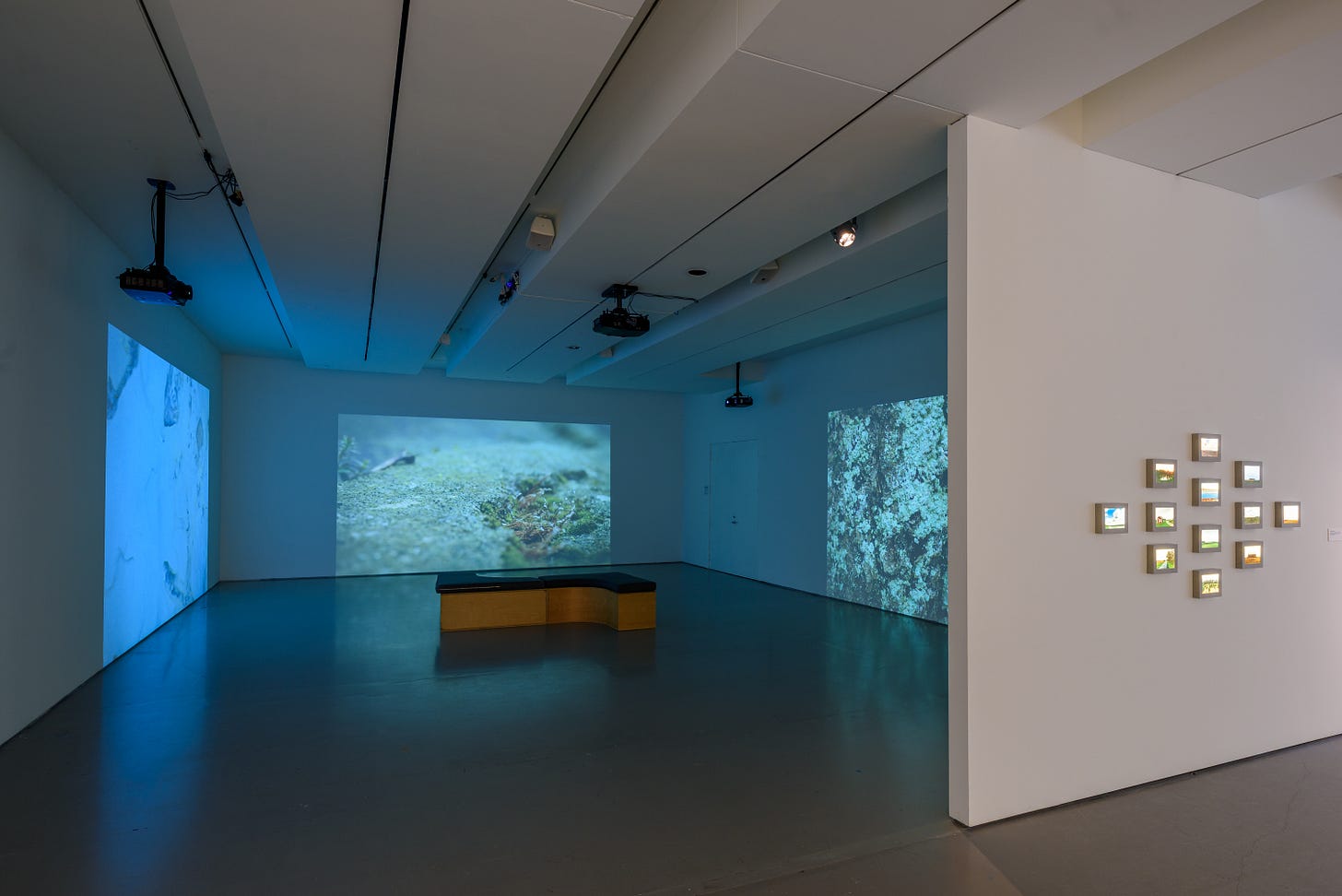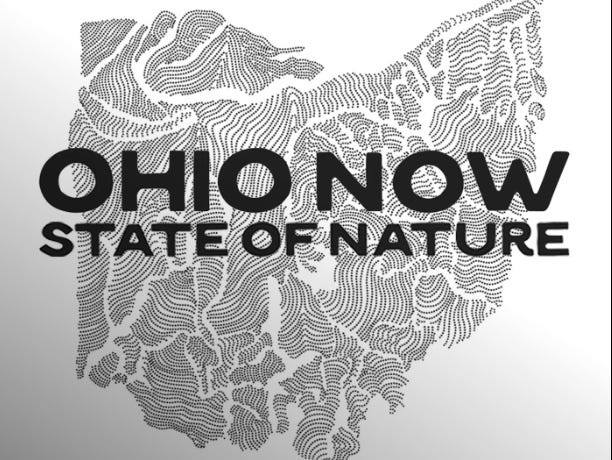This Was Once a Forest: On Glacial Grooves, Old-Growth Forests, and Ancient Seabeds
“Ohio Now” Exhibition Opening Friday at Contemporary Arts Center Cincinnati
This Friday (from 7-10pm), I have a sound and video installation opening as part of a group exhibition at the Contemporary Arts Center (CAC) Cincinnati. Called “Ohio Now: State of Nature,” the exhibition features more than a dozen artists from across the state, each making work in response to our relationship with the environment. My project is called This Was Once a Forest, This Was Once a Sea, and it explores three different landscapes and time periods of Ohio. I am so excited to be a part of this amazing cohort of artists, and if you are in the area, I hope to see you at the opening. You can find out more about the exhibition here.
Last summer, I began an ongoing conversation with curators Theresa Bembnister from CAC and DJ Hellerman from the Museum of Contemporary Art Cleveland (to which the show will travel in 2026). We talked about Ohio, the environment, nature, and sustainability, and how one might make artwork that asks visitors to understand Ohio’s sense of nature in a new way.
Then in the fall, I made several trips to Caesar Creek State Park and Davey Woods State Nature Preserve, both in Ohio. When engineers cut away an emergency spillway at Caesar Creek, they inadvertently exposed an ancient sea bed (nearly 450 million years old). I loved walking among all of the fossils and listening to their sounds.
At the Davey Woods State Nature Preserve, I focused on the many old-growth trees that dot the landscape. Throughout the 19th century, Ohio lost over 90% of its forests due to deforestation. It is hard for me to imagine what it looked like only a few hundred years ago.
And then finally, this spring I traveled up to Kelleys Island on Lake Erie with my friend Kevin Davison, who was helping me document each location. We took a ferry across choppy waters to the island and visited some glacial grooves there, carved into the limestone. A friendly park ranger allowed us onto the rock, and we played like kids while filming and recording. The grooves looked like one of those giant State Fair slides, where we would sit on burlap sacks and speed down its humps and slopes. Again, it was hard to fully comprehend the glaciers that were once there, and the mark they made on these rocks. And to add to this mystery, Kelleys Island is also a place where my great-grandmother and her ancestors lived, and I found myself walking through the very same places where she grew up.


I was attracted to these places because they changed my perspective on Ohio, how I experience time and the past, and how I understand my place in the world. Normally, I work with archives to find material for my projects. In these places, however, the land itself is an archive, and I loved looking for traces of the past that are written into the trees, the rocks, and the water.
As I started to put all of this material together, I realized how important time is to this piece. The more I paid attention to the land, time shifted and expanded. I could see how the landscape was radically different not only 450 million years ago, or 14,000 years ago, but only two centuries ago.
These thoughts led to more connections: to natural ecologies, and to our relationship to the environment and its sustainability. I realized that when we pay attention to the land carefully and up-close, it shows us both our relative insignificance (in that our time here is exceptionally short), and also our outsized environmental impact. This realization is a call to both honor our rich and often hidden past, and to act as stewards into the future.
The installation (with three projected screens and four audio channels) presents these radically different Ohio environments together. When we were filming and recording, I had a desire to listen inside, to get as close as I could to the rocks, the fossils, and the trees, to feel the textures of each environment, and to imagine what it may have been like in the past. The resulting video is almost exclusively up-close, and we see geometric patterns and details as the camera moves across the surface. Sometimes, the video looks like an abstract painting; other times it looks like the topography of the land in aerial photos.

Likewise, the field recordings reflect this up-close perspective. Walking into the gallery, listeners will hear three different scenes — of trees, water, and fossils. For the trees, I placed contact microphones inside the natural holes of old-growth trees (from insects and small animals). When I did so, I was amazed at what I heard! It was a windy day, and the trees were swaying back and forth, creaking and groaning, and the recordings have a remarkable, almost underwater feeling to them. For the fossils: at first I imagined listening as one might listen to seashells, cupped to your ear. But because the shells were embedded into rock, they did not have this acoustic quality, and needed to be activated. So instead, I scraped and tapped the fossils, and rubbed my fingers across their surfaces, all as a sensuous way of understanding them.
And finally, for the water: I threw a hydrophone (a water-proofed microphone) into Lake Erie, right next to the glacial grooves. I was suddenly transported underwater, and as the microphone dragged across the lake bed and swirled in the waves, I was reminded at how powerful and violent the water can be. (I was also reminded of a great-uncle who perished in Lake Erie while on a fishing trip, never making it back to Kelleys Island).
One thing I would like visitors (at both the CAC and MOCA Cleveland) to notice is the fact that the very place where they are standing was once part of a forest. And it wasn't that long ago, either! And then, to notice that if we just go back in time, the place where they are standing was once part of a glacier, and then even further back, an ancient ocean. To me, this is mind-boggling.
The key here is to pay attention. To listen to the up-close sounds of the rocks and fossils, of the wind and birds, and to notice the internal sounds of the trees, water, and fossils: creaking, insects, whooshing liquids, sand, flexibility, movement. I would also pay attention to the up-close images, taking time to carefully explore the textures and grain of the land, from the fossils of an ancient seabed to the living moss on the side of a centuries-old tree.
I hope you can join me at the opening reception this Friday (May 2), from 7-10pm.
Thank you for reading and for listening —
Brian







